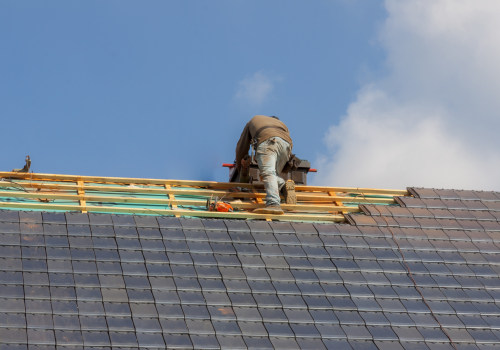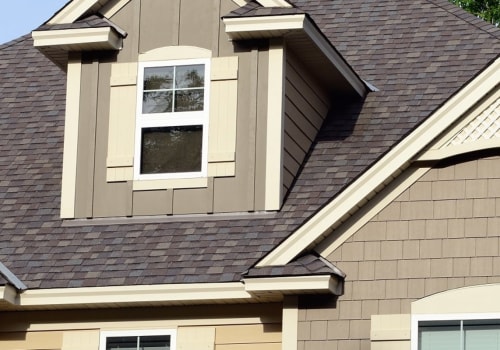Choosing the right roofing material is a critical decision for homeowners, as it affects the longevity, appearance, and overall performance of their roof. The roofing industry offers a variety of materials, each with its unique benefits and drawbacks. Here, we explore five common types of roofing materials: asphalt shingles, metal roofing, clay and concrete tiles, wood shingles and shakes, and slate roofing. Understanding the characteristics of each can help homeowners make informed choices for their roofing needs.
Asphalt Shingles
Asphalt shingles are the most popular roofing material in North America due to their affordability, versatility, and ease of installation. These shingles are made from a base of fiberglass or organic material, coated with asphalt and topped with mineral granules. Asphalt shingles come in two main types: three-tab shingles and architectural shingles. Three-tab shingles are flat and uniform, while architectural shingles are thicker and have a more dimensional appearance, mimicking the look of wood or slate. The lifespan of asphalt shingles typically ranges from 20 to 30 years, depending on the quality and local climate conditions. They are relatively easy to install, making shingle roof installation a cost-effective option for many homeowners.
Metal Roofing
Metal roofing is known for its durability, longevity, and energy efficiency. Common metals used in roofing include steel, aluminum, copper, and zinc. Metal roofs can last between 40 to 70 years, making them a long-term investment. They are highly resistant to severe weather conditions, such as heavy rain, snow, and high winds. Additionally, metal roofs reflect solar radiant heat, which can reduce cooling costs in warmer climates. They are available in various styles, including standing seam panels, metal shingles, and metal tiles, allowing homeowners to choose a look that complements their home’s architecture. Despite the higher upfront cost, metal roofing’s durability and low maintenance requirements can offer significant savings over time.
Clay and Concrete Tiles
Clay and concrete tiles are known for their distinctive appearance and exceptional durability. Clay tiles are typically orange or red, giving homes a Mediterranean or Spanish-style look, while concrete tiles can be manufactured in a variety of colors and styles, including those that mimic wood, slate, or stone. Both materials are highly durable, with life expectancies ranging from 50 to 100 years. They are also fire-resistant and can withstand harsh weather conditions. However, clay and concrete tiles are heavy, requiring a strong roof structure to support their weight. The installation process can be complex and labor-intensive, necessitating professional expertise. Despite these challenges, their longevity and aesthetic appeal make them a desirable choice for many homeowners.
Wood Shingles and Shakes
Wood shingles and shakes offer a natural, rustic appearance that enhances the charm and character of many homes. Made from cedar, redwood, or other durable woods, shingles are machine-cut for a smooth, uniform look, while shakes are hand-split, giving them a more textured and rugged appearance. The lifespan of wood roofing typically ranges from 25 to 40 years, depending on the type of wood and maintenance. Wood shingles and shakes require regular upkeep to protect against rot, insects, and fire. Treatments for fire resistance and moisture protection are essential to extend their lifespan. Despite the maintenance needs, wood roofing provides excellent insulation and a timeless aesthetic that appeals to many homeowners.
Slate Roofing
Slate roofing is renowned for its unparalleled beauty, durability, and longevity. Made from natural stone, slate roofs can last 75 to 200 years, making them one of the longest-lasting roofing materials available. Slate is highly resistant to fire, water, and temperature fluctuations, ensuring superior protection for homes. Its natural colors and textures create a sophisticated and elegant look that enhances the value of any property. However, slate roofing is heavy and requires a reinforced roof structure to support its weight. The installation process is complex and should be carried out by experienced professionals to ensure proper placement and longevity. While the initial cost is high, the lifespan and minimal maintenance needs of slate roofing make it a worthwhile investment for those seeking durability and aesthetic appeal.
Conclusion
In conclusion, the choice of roofing material depends on various factors, including budget, desired aesthetics, climate conditions, and maintenance preferences. Asphalt shingles are a popular, cost-effective option with a reasonable lifespan. Metal roofing offers exceptional durability and energy efficiency, making it ideal for long-term investment. Clay and concrete tiles provide a distinctive look and long life expectancy, while wood shingles and shakes offer natural beauty with higher maintenance needs. Slate roofing stands out for its unmatched durability and elegance, albeit with a higher upfront cost. Understanding the characteristics of these five common roofing materials can help homeowners make informed decisions and select the best option for their needs, ensuring a durable and visually appealing roof for their homes. Consulting a professional roofer is always advisable to ensure the chosen material is properly installed and maintained, providing lasting protection and value.




